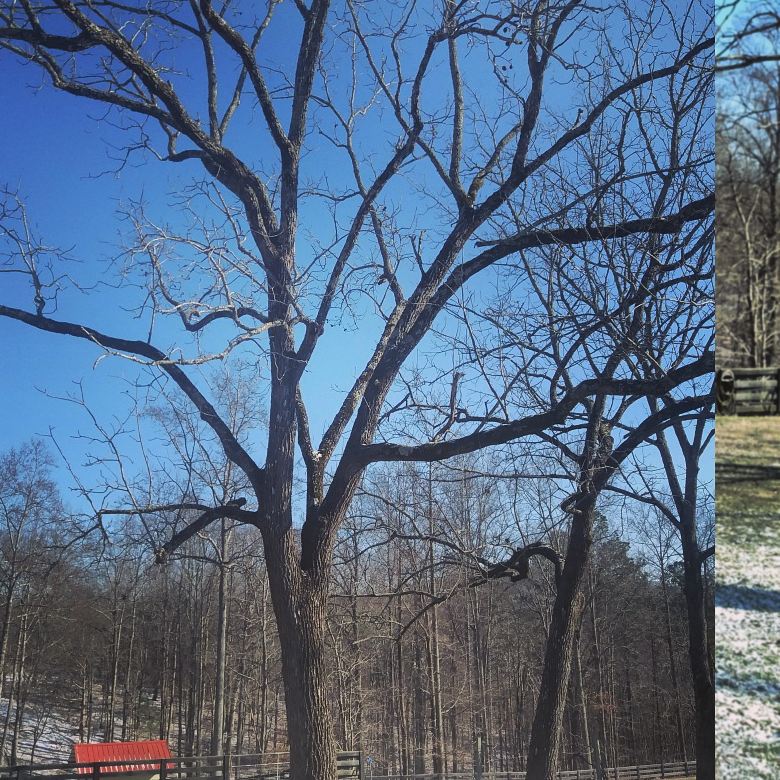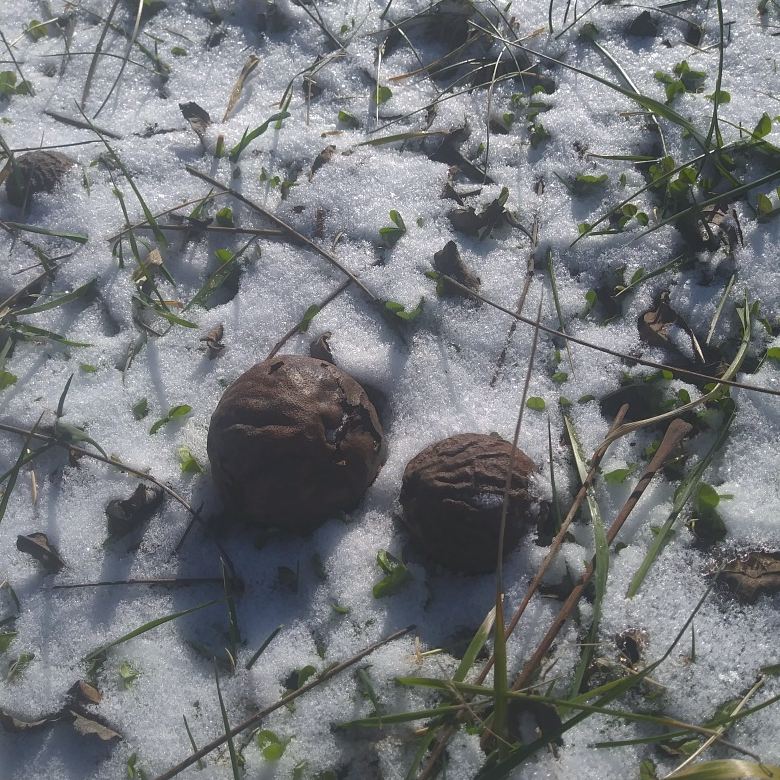Today’s plant for #WildEdibleWednesday is Juglans nigra, or Black Walnut. Also known as American walnut, these trees produce some of the finest-quality nuts around... but you probably already knew that. What you may not know is that this stately native tree also has a surprising range of medicinal uses.
Black walnut ranges from New England west to Minnesota and south to the northern half of Florida and Louisiana. It is one of our rarest native trees in the wild – it grows slowly, and is usually only found in moist areas like river bottoms. If you want to find one, your best bet is to locate an abandoned homestead site. These trees were very popular among American pioneers, who would often carry seed walnuts with them to plant whenever they established their homestead. The walnut trees I photographed for this post are growing on the site of a 170-year-old homestead on the neighboring property. One thing about black walnuts is that once they’re established, they usually are there to stay. The husks of the nuts contain a compound called juglone – it’s a natural toxin that kills off any other plants or tree seedlings of other species that try to grow around the walnut tree. Because of this, one of the easiest ways to spot an old walnut grove is that it’s usually clearer than the surrounding forest – nothing but black walnuts growing, and almost no undergrowth.
Black walnuts are one of the taller trees in the forest, growing up to 130’ when provided with ideal conditions. Their leaves are compound and alternately arranged. They are pinnate, with a large number (usually about twenty) lanceolate, toothed leaflets along the stem. They look a lot like hickory or pecan leaves, as they should – they’re close cousins. The easiest way to distinguish black walnut (other than the walnuts lying on the ground everywhere) is the bark. It doesn’t look quite like any other tree. The bark is rough, furrowed, and very dark brown – ranging from a coffee color to nearly black. Black walnut wood is highly desirable… traditionally, it’s been used for gun stocks, cabinetry, coffins, furniture, and sometimes flooring. It is beautiful, with a dark, coffee-colored heartwood and honey-colored sapwood. It is strong, durable, straight-grained, and easy to work. In fact, it’s so desirable that tree poaching is a real problem. Poachers will sneak onto a property in the middle of the night, cut down a walnut tree, and steal it. A whole tree can sell for between $2,500 and $7,000. So if you have some of these trees on your property, our advice to you is to keep a good hold on your walnuts. Don’t want nobody touchin' your walnuts without permission.
The nuts themselves are why most pioneers planted these trees in their yards. They are some of the finest forest fare available, a true gourmet treat. They have a sweet, nutty, almost spicy flavor to them that lends itself extremely well to pies, cakes, cookies, and other baked goods. They’re much easier to extract than hickory nuts, but still more difficult than English walnuts. Soaking the nuts in warm water for a few hours at a time helps soften the shell and makes them much easier to crack. Like other nuts, walnuts are a prime survival food if you can find them.
One ounce of black walnuts contains, among other things:
- 173 calories
- 2.8 grams of carbs
- 6.7 grams of protein
- 16.5 grams of fat (!)
- 1.9 grams of fiber
- 55% DV of manganese
- 19% DV of copper
- 14% DV of magnesium
- 14% DV of potassium
They also have the advantage of being gathered and stored for later – unshelled walnuts will last all winter if stored properly.
Pro tip: when working with black walnuts, always wear latex or nitrile gloves. The same juglone that kills plants can also cause pretty severe skin irritation. And keep in mind that the juglone dye (what makes black walnuts black) is forever. Seriously, forever. For that reason, it’s been used as black fabric dye for generations. I have a black-and-white woven blanket from the late 1800s that’s been passed down on my dad’s side of the family. The white portion has yellowed and aged, but the black portion dyed with walnut husks is the same vibrant, pure black as the day it was made. If you get it on your hands, it won’t wash off. It has to wear off. And if you get it on your clothes, forget it. That stain is never coming off.
The nutritional value, timber value, and dye characteristics of black walnut are fairly well known. However, these trees also have a powerful medicinal aspect as well, and it all revolves around the same compound that defines nearly everything about this tree: Juglone. The husks of the nuts when picked green, dried, powdered, and mixed into a drink work to treat intestinal parasites. Juglone is toxic to flatworms, roundworms, and hookworms, as well as large protozoa like the dreaded giardia and cryptosporidium. In fact, black walnut is one of the few effective natural treatments for giardia – a potentially fatal illness if contracted with no access to medical care. When used topically, the mixed powder (or a leaf poultice) can work to treat fungal infections of the skin such as ringworm, yeast infections, jock itch, and athlete’s foot. It has been shown to be as effective, if not more so, than commercial anti-fungal treatments.
If you have one of these trees on your property, cherish it. Prized for generations and valuable enough to steal, black walnut is one of the most useful trees in the Eastern Woodlands.
- Alex






